
views
X
Research source
In general, Hermit crabs are usually pretty easy to keep happy and healthy. But under certain circumstances, even hermit crabs can get sick. By watching for symptoms of illness, you can tell if your hermit crab is sick and get her proper and timely treatment.
Watching for Symptoms of Illness
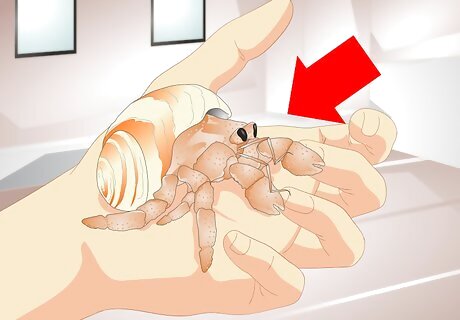
Look for physical signs of illness. Although illness is relatively uncommon, crabs can get sick. This is usually related to problems with their habitat, or “crabitat,” but may be a result of other issues such as mites.
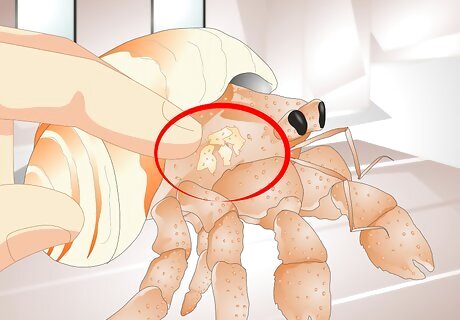
Examine for dry skin. Hermit crabs need access to water to keep their skin moist and healthy. Examining your crab for signs of dry skin can keep your crab from drying out and ensure it can breathe properly. Signs of dry skin in hermit crabs can include: Lack of water in the tank or on a sponge Matte appearance to the skin Excessive burrowing to get at moist spots in the tank
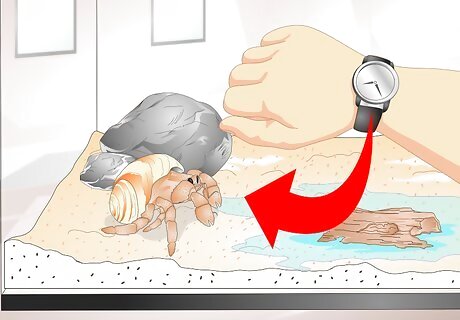
Notice lack of movement. The environment in the tank is vital to a hermit crab’s health and promotes its movement, too. If your hermit crab isn’t moving around much, the water in its habitat or even toxic paint on its shell could be killing it. Lethargy can also be a sign of stress. Recognize that most hermit crabs like to play and will move around their habitats a lot if they are not molting or sick. Make sure your hermit crab is moving regularly and not hanging out of its shell, which can be a signal that it is dying. Remember that lack of movement can also signal molting.
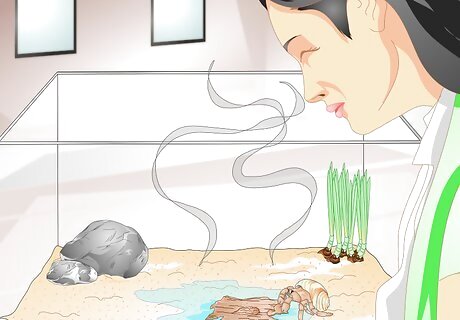
Smell the tank. Foul odor coming from the tank can signal illnesses related to problems with the habitat. Check on your crabs every day, which can quickly signal you to any bad smells that might be coming from the animals or parts of the tank. Be aware that there may be a broad range of odors that can signal problems. These include: stinky feet, fish or shrimp, mildew or must, rotting food.
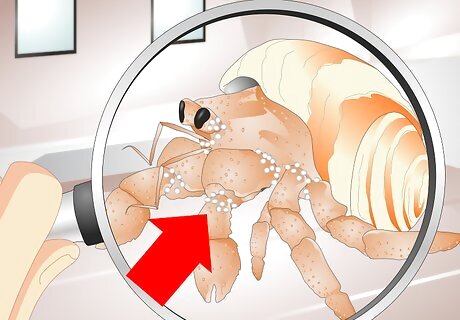
Check for mites. Mites are arguably the most common cause of health issues for hermit crabs and you should be especially vigilant in checking for these. Be aware that there are “good” and harmless mites that inhabit crab’s spaces and bodies but that there are also “bad” and harmful mites. Watch out for the following types of harmful mites: Gill mites, which are light pink or red and bury into the gills of hermit crabs. These mites are often not visible until after a hermit crab’s death because a flap of skin protects the gills of live animals. Crab mites, which glue themselves to soft parts of hermit crabs’ bodies including the eyes, mouth, or joints. Crab mites range in color from white to cream, grey, pink, or red.
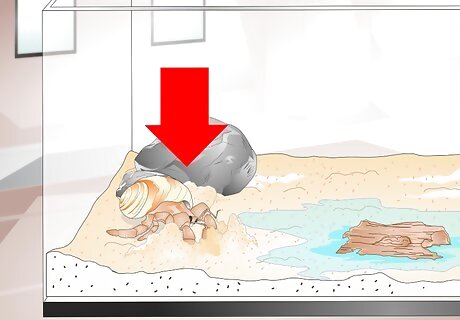
Observe behavior. In addition to the physical symptoms of illness, hermit crabs may also exhibit unusual behaviors. Checking on your crabs daily will help you see each animals typical behavior—hermit crabs do have distinct personalities-- and can alert you to potential problems. Some behavioral problems to watch out for are: Digging down into the habitat sand or coconut fiber to “de-stress” Consuming large amounts of food or water Soaking in the water dish Being very lethargic. Hiding in its shell for long periods, especially if it usually enjoys attention. Molting in the open. Hanging out of its shell in a limp or lifeless manner.
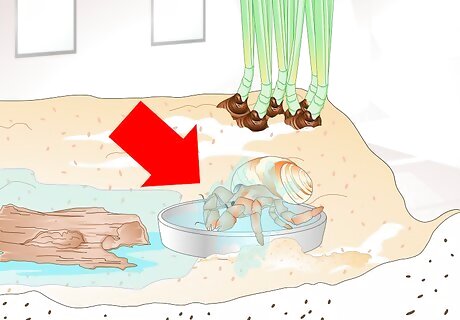
Avoid confusion with molting. Sickness is rare among hermit and other types of crabs. However, there can be some confusion when trying to tell if your hermit crab is sick because many of the symptoms of illness parallel the signs of molting such as missing limbs and burrowing for days or months. Some additional signs that your hermit crab may be molting and not sick, especially if the crab exhibits several of these symptoms, are: Digging Drinking large amounts of water or soaking in the dish Spilling water from the dish to dampen the sand or coconut fiber in the tank Cloudy eyes Ashy-looking skin, which is also called the exoskeleton Lethargy.
Caring for Your Ill Crab
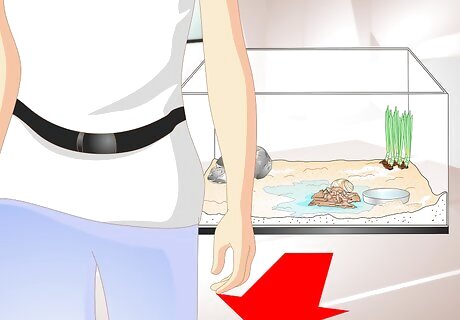
Leave molting crabs alone. Crabs must molt their skin to grow and this process can take weeks or months. If you realize your hermit crab is molting, leave it alone because she may be very fragile and any type of contact can cause her undue stress. Be aware that healthy crabs will molt “in private” by burrowing or hiding in a dark spot of the tank. The crab may not eat during molting, either. Leave the molting or molted skin on the crab. She will eat the skin for calcium once she’s done molting.
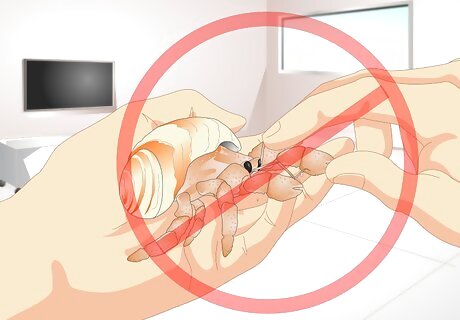
Avoid handling your crab if possible. In most cases, you should avoid touching your hermit crab in any way. This can cause them undue stress and may kill it, especially if the crab is molting. Stay away from blowing on or poking your crab, which can also stress your pet. Be aware that there is varying information on touching crabs, but that not handling them with care can result in bites.
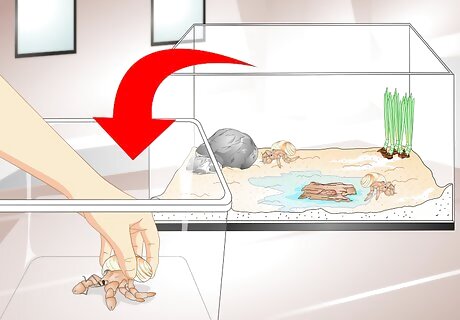
Isolate sick crabs. If you suspect one of your crabs is sick, especially with mites, you’ll need to separate it from its crab friends. Prepare a large bucket or other container in which to isolate and treat your hermit crab. Make sure that the isolation tank is similar to your crab’s normal habitat. Add some dechlorinated water, sand or coconut fiber, toys, and food in the crabitat. Observe your sick crab to make sure it is healing. Once it appears healthy again, move it back to the regular tank. Avoid isolating molting crabs as this can kill them. Remember to leave them alone in their usual habitat. Move a crab that is hanging out of its shell limply to an isolation tank. This is a sign that the crab may be dying.
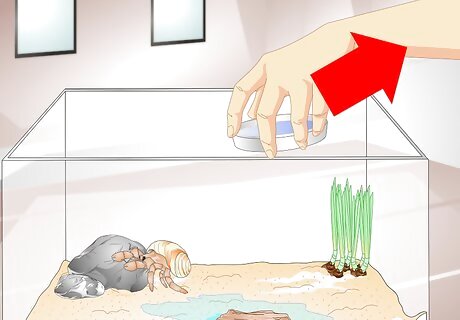
Clean your crabitat. Many illnesses that crabs develop are a result of problems with the water or its habitat. Changing the water regularly key to healing and maintaining your hermit crab’s health. Add new water to the tank as you see it evaporating. Change the water if you notice an ammonia smell or murky water. Remember to use dechlorinated and brackish water. Never use table salt to make brackish water. Place new sand and toys in the habitat. You can also clean toys with a mild soap and water and rinse it thoroughly.
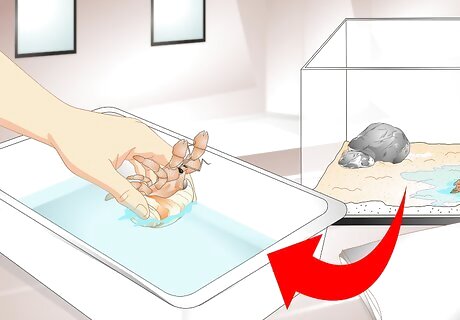
Kill mites with a bath or other mites. Although there are differing viewpoints on the treatment of bad mites on your hermit crab, there are a couple of different ways to kill them. You can either bathe your hermit crab or introduce a mite species that will eat the bad mites from your pet. bath with care if you choose to use this method. Use dechlorinated, tepid water and lower him into a container you’re using as a bath. Your crab may go into the water alone, too. Don’t leave your crab unattended and remove it from the water after about a minute. Drain any excess water from the shell and allow your crab to dry out in a box or on a paper towel. Put the crab back in its usual habitat once it is dry. Introduce the predatory mite Hypoaspis miles into a habitat infested with bad mites. The Hypoaspis miles will eat all of the other mites, larvae, and eggs without bothering your crabs. As the number of bad mites disappears, so will the number of Hypoaspis miles.
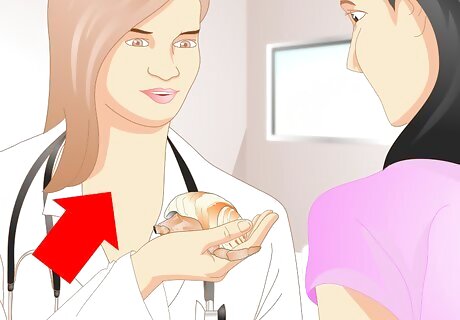
Take the crab to the vet. Consider taking your hermit crab to the vet if no other treatments are working or you don’t feel comfortable. However, you should be aware that there is little a vet can do for a very sick or dying hermit crab and nature may need to simply take its course. Call your vet’s office to make sure they will see hermit crabs. Consider your crab’s health. If it really is dying, moving it to go to the vet can cause it unnecessary stress.




















Comments
0 comment